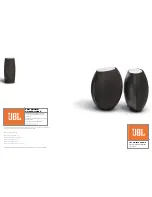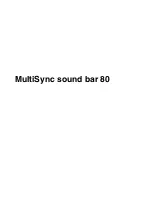
SAFETY INSTRUCTIONS
May 25, 2022
Page 6
User Manual No: OM-10
4
A EN
ARC RAYS can injure eyes and burn skin
Arc rays from the welding process produce
intense heat and strong ultraviolet rays that
can burn eyes and skin.
•
Wear approved safety glasses. Side shields rec-
ommended.
•
Wear a welding helmet fitted with a proper shade of filter (see ANSI Z49.1
listed in Safety Standards) to protect your face and eyes when welding or
watching.
•
Use protective screens or barriers to protect others from flash and glare;
warn others not to watch the arc.
•
Wear protective clothing made from durable, flame-resistant material
(wool and leather) and foot protection.
NOISE can damage hearing
Noise from some processes can damage
hearing.
•
Use approved ear plugs or earmuffs for high
noise levels environments.
FLYING SPARKS can injure
Flying sparks and hot metal can cause in-
jury. Chipping and grinding cause flying
metal.
•
Wear proper body protection to protect skin.
•
Wear approved face shield or safety goggles. Side shields are recom-
mended.
•
Sparks can cause fire, remove all flammable materials within 35 ft (10.7
m) of the working zone.
EQUIPMENT OVERHEATING
Power Source casing, terminals, cables,
ground clamp, electrode stub or torch parts
can cause inquiry when overheated.
•
Allow cooling period before touching MIG
Torch.
•
Allow cooling period; follow rated duty cycle of MIG Torch.
•
Reduce amperage and/or arc on time before starting to weld again.
•
Do not block or filter air vent to Power Source.
BUILDUP OF GAS can injure or kill
Shielding GAS used for wire welding can
cause asphyxiation or death in confined
places.
•
Shut off compressed shielding gas supply when
not in use.
•
Always ventilate confined spaces or use approved air supplied respirator.
FUMES and GASES can be hazardous
FUMES and GASES can be hazardous to
your health. Welding produces fumes and
gases. Breathing these fumes and gases can
be hazardous to your health.
•
Keep your head out of the fumes. Do not breathe the fumes.
•
If inside, ventilate the area and/or use local exhaust at the arc to remove
welding fumes and gases.
•
If ventilation is poor, use an approved air-supplied respirator.
•
Read the Material Safety Data Sheets (MSDSs) and the manufacturer’s
instruction for consumables, coatings, cleaners,
consumables, coolants,
degreasers, fluxes, and metals.
•
Work in a confined space only if it is well ventilated, or while wearing an
air-supplied respirator. Always have an observer trained in rescue and
emergency procedures to monitor the person in a confined space. Shield-
ing gases used for welding can displace air causing injury or death. Be
sure the breathing air is safe.
•
Do not weld in locations near degreasing, cleaning, or spraying opera-
tions. The heat and rays of the arc can react with vapours to form highly
toxic and irritating gases.
•
Do not weld on coated metals, such as galvanized, lead, or cadmium
plated steel, unless the coating is removed from the weld area, the area
is well ventilated, and if necessary, while wearing an air supplied respira-
tor. The coatings and any metals containing these elements can give off
toxic fumes if welded.
MOVING PARTS can cause injury
Moving parts, such as fans, drive gears, ro-
tating wire spools, rotors, and belts can cut
fingers and hands and catch loose clothing.
•
Keep all doors, panels, covers, and guards
closed and securely in place.
•
Switch OFF Power Source before installing or
connecting it.
•
Keep hands, hair, loose clothing, and tools
away from moving parts.
•
Have only suitably Trained and Qualified Tradesperson remove guards or
covers for maintenance and troubleshooting, as necessary.
•
To prevent accidental starting during servicing, disconnect Power Source
from power receptacle or disconnect negative battery cable from battery.
•
Reinstall panels or guards and close doors when servicing is finished and
before starting engine.
ELECTRIC and MAGNETIC FIELDS (EMF)
can affect Implanted Medical Devices
Consult your doctor and the Implanted
Medical Device manufacturer before going
near arc welding, spot welding, gouging or
plasma arc cutting.
•
Wearers of Pacemakers and other Implanted Medical Devices should
keep away.
SHIELDING GAS CYLINDERS can explode
Shielding gas cylinders contain gas under
high pressure. If damaged, a cylinder can
explode. Since gas cylinders are normally
part of the welding process; be sure to treat
them carefully.
•
Protect compressed gas cylinders from excessive heat, mechanical
shocks, and arcs.
•
Install and secure cylinder(s) in an upright position by chaining cylin-
der(s) to a stationary support or equipment cylinder rack to prevent falling
or tipping.
•
Keep cylinders away from any welding or other electrical circuits.
•
Never allow a welding electrode to touch any cylinder.
•
Use only correct shielding gas cylinders, regulators, hoses, and fittings
designed for the specific application; maintain them and associated parts
in good condition.
•
Turn face away from valve outlet when opening cylinder valve.
•
Keep protective cap in place over valve except when cylinder is in use or
connected for use.
•
Read and follow instructions on compressed gas cylinders, associated
equipment, and CGA publication P-1 listed in Safety Standards.
WELDING WIRE can cause injury
Welding wire can cause injuries to hands,
ears, eyes, etc.
•
Do not depress Torch Trigger or commence
welding process until it is safe to do so.
•
Do not point the end of the MIG Torch near any part of your body, other
people, or any metal when threading the welding wire thru the MIG Torch.
•
•







































